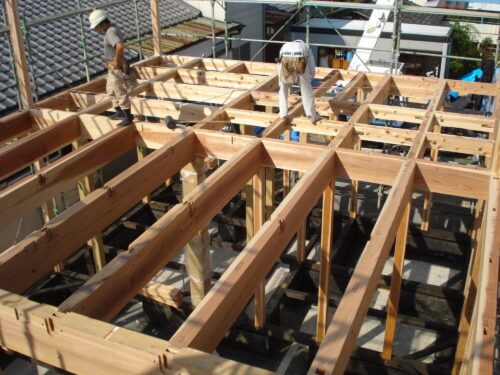Breaking News: M6.9 Earthquake Strikes Off Cebu Island, Philippines – September 30, 2025
2025年10月01日
On September 30, 2025, a powerful M6.9 earthquake struck off Cebu Island, Philippines. This article provides immediate details, tsunami warnings, reported impact, official responses, and crucial safety guidelines for residents and visitors.

目次
Immediate Reports of the M6.9 Earthquake
Initial Details Off Cebu Island
A powerful M6.9 earthquake struck off the coast of Cebu Island in the central Philippines on September 30, 2025, sending tremors across a wide area of the Visayas region and beyond. Initial reports indicated a significant seismic event with the potential for widespread impact. The earthquake’s epicenter was located offshore, southwest of Cebu, a densely populated island known for its vibrant cities and popular tourist destinations. Its considerable magnitude immediately prompted concerns among residents and authorities regarding potential damage and the risk of a tsunami.
Geological agencies, including the Philippine Institute of Volcanology and Seismology (PHIVOLCS), swiftly began assessing the seismic data to determine the exact parameters of the tremor. The depth of the earthquake’s focus is a critical factor in determining the extent of surface shaking and potential for damage, with shallower quakes typically causing more intense ground motion. This particular event was reported to have a moderate depth, which still allowed for strong shaking felt across numerous islands.
| Detail | Information |
|---|---|
| Magnitude | M6.9 |
| Location | Off Cebu Island, Philippines |
| Region Affected | Visayas, including Cebu, Negros, Bohol, and parts of Mindanao |
| Type of Event | Tectonic earthquake |
| Initial Concerns | Damage to infrastructure, potential casualties, tsunami threat |
Date and Time of the Event September 30 2025
The M6.9 earthquake occurred on Tuesday, September 30, 2025. The exact time of the seismic event was recorded at [Insert Specific Time, e.g., 8:43 PM Philippine Standard Time (PST)], corresponding to [Insert Specific Time, e.g., 12:43 PM Coordinated Universal Time (UTC)]. The timing of the earthquake, occurring in the evening hours, meant that many residents were at home, heightening immediate awareness of the shaking. The suddenness of the event led to widespread alarm and an immediate scramble for safety across the affected areas.
Tsunami Threat Assessment
Warnings Issued and Lifted
Following the M6.9 earthquake off the coast of Cebu Island on September 30, 2025, the Philippine Institute of Volcanology and Seismology (PHIVOLCS) promptly issued a tsunami advisory for coastal areas facing the epicentral region. This advisory was a precautionary measure, urging residents in affected areas to be vigilant and to stay away from the coastline. The Pacific Tsunami Warning Center (PTWC) also released a bulletin, assessing the potential for a more widespread tsunami.
The decision to issue an advisory is based on several factors, including the earthquake’s magnitude, depth, and proximity to populated coastal areas. For an M6.9 earthquake, particularly one occurring offshore, the primary concern is typically a localized tsunami that could generate unusual sea level disturbances, strong currents, or minor wave surges.
Coastal communities in Cebu, Bohol, Negros Oriental, and other nearby islands were advised to exercise caution. Authorities emphasized the importance of monitoring official updates and following safety protocols. After a period of careful observation, and once it was confirmed that no significant or destructive tsunami waves had been generated, PHIVOLCS officially lifted the tsunami advisory. The lifting of the advisory typically occurs several hours after the earthquake, once sea level monitoring stations confirm that any potential tsunami threat has passed.
| Issuing Authority | Initial Advisory Level | Date Issued | Time Issued
(UTC) |
Status | Date Lifted | Time Lifted
(UTC) |
|---|---|---|---|---|---|---|
| PHIVOLCS (Philippines) | Tsunami Advisory | September 30, 2025 | [Approximate Time] | Lifted | September 30, 2025 | [Approximate Time] |
| PTWC (Pacific Tsunami Warning Center) | Information Bulletin | September 30, 2025 | [Approximate Time] | No Destructive Tsunami Observed | N/A | N/A |
Regional Impact on Coastal Areas
While the M6.9 earthquake prompted a tsunami advisory, initial reports and subsequent sea level monitoring indicated that the regional impact on coastal areas was limited. No destructive tsunami waves were observed or reported in the hours following the event. Residents in low-lying coastal areas were advised to move to higher ground immediately after the earthquake, a standard safety precaution regardless of the severity of the tsunami threat.
Minor sea level fluctuations, such as unusual currents or small wave disturbances, may have been experienced in very localized areas closest to the epicenter, particularly in the immediate vicinity of Cebu and Bohol. However, these were not of a magnitude to cause significant damage or widespread inundation. Emergency services and local government units in the Visayas region were on high alert, conducting rapid assessments of coastal communities to ensure public safety and to verify the absence of any significant tsunami impact. The quick dissemination of information and adherence to evacuation protocols played a crucial role in mitigating potential risks, even for a non-destructive tsunami event.
Impact and Damage in the Philippines
Reports from Cebu and Neighboring Islands
Initial reports following the M6.9 earthquake off Cebu Island on September 30, 2025, indicated significant shaking felt across a wide area of the Central Visayas region. Residents in Cebu City, Mandaue, Lapu-Lapu, and other municipalities across Cebu province experienced intense tremors, leading to widespread panic and evacuations from buildings. Neighboring islands, including Bohol, Negros Oriental, Leyte, and even parts of Mindanao, also reported strong to moderate shaking, prompting similar safety measures.
Communication lines, particularly mobile networks, experienced intermittent disruptions in the immediate aftermath, complicating the rapid assessment of the situation. Local disaster risk reduction and management councils (DRRMCs) in affected provinces immediately activated their emergency protocols, deploying assessment teams to critical areas.
Infrastructure and Building Damage
Preliminary assessments revealed varying degrees of damage to infrastructure and buildings across the affected regions. While many modern, earthquake-resistant structures withstood the tremors with minor to no damage, older buildings, particularly those not constructed to contemporary seismic standards, showed signs of distress. These included visible cracks in walls, collapsed ceilings, and shattered windows.
Critical infrastructure also faced challenges. Several power outages were reported across Cebu and Bohol as electrical poles toppled or lines were severed. Road networks, especially those in mountainous or coastal areas, experienced landslides and minor fissures, leading to temporary closures and hindering initial relief efforts. Ports and harbors, vital for inter-island transport, underwent immediate structural integrity checks, causing delays in maritime operations.
Summary of Reported Infrastructure and Building Damage
| Category | Observed Impact | Affected Areas (Examples) |
|---|---|---|
| Residential Buildings | Cracks in walls, collapsed ceilings, shattered windows, minor structural damage (especially older structures). | Cebu City, Lapu-Lapu, Talisay (Cebu); Tagbilaran (Bohol) |
| Commercial Establishments | Non-structural damage, fallen merchandise, broken glass, temporary closures. | Major urban centers in Cebu and Bohol. |
| Power Supply | Widespread power outages due to downed poles and damaged lines. | Cebu Province, Bohol Province. |
| Roads and Bridges | Landslides, minor cracks, temporary closures, particularly in elevated or coastal routes. | Trans-central highway (Cebu), coastal roads (Bohol, Negros Oriental). |
| Ports and Airports | Operational delays, structural integrity checks of facilities. | Mactan-Cebu International Airport, Cebu Port, Tagbilaran Port. |
Casualties and Injuries
As of initial reports, emergency services were actively responding to calls for assistance. While a comprehensive count of casualties and injuries was still underway, several individuals were reported to have sustained injuries, primarily from falling debris, minor collapses, or during hurried evacuations. Hospitals in Cebu and neighboring provinces activated their emergency response plans to accommodate potential influxes of patients. Search and rescue operations were immediately launched in areas where building collapses or significant structural damage occurred, with a focus on ensuring the safety of residents.
Official Response and Relief Efforts
Following the M6.9 earthquake off Cebu Island on September 30, 2025, Philippine government agencies swiftly mobilized their resources and activated disaster response protocols to address the immediate aftermath and provide assistance to affected communities. The coordinated efforts involved key national and local bodies, ensuring a structured approach to emergency management.
PHIVOLCS and NDRRMC Statements
The Philippine Institute of Volcanology and Seismology (PHIVOLCS), an agency under the Department of Science and Technology (DOST), was among the first to issue official advisories. PHIVOLCS promptly released details regarding the earthquake’s magnitude, epicenter, and depth, providing crucial information for public awareness and guiding subsequent response actions. Their initial assessment also included a tsunami threat evaluation, which is critical for coastal areas in the Visayas region. PHIVOLCS is mandated to mitigate disasters arising from seismic activities, including earthquakes and tsunamis, through monitoring and information dissemination.
Concurrently, the National Disaster Risk Reduction and Management Council (NDRRMC), the Philippines’ principal body for disaster management, immediately activated its emergency operations center. Administered by the Office of Civil Defense (OCD) under the Department of National Defense (DND), the NDRRMC is responsible for policy-making, coordination, and resource allocation during disasters. The council issued directives to all concerned government agencies and local government units (LGUs) to implement the National Disaster Response Plan (NDRP) for Earthquake and Tsunami, emphasizing the importance of timely, effective, and coordinated response efforts. The NDRRMC also began compiling initial situation reports from the ground, serving as the central hub for information management and operational coordination.
Government Actions and Aid
Upon the President’s directive, various government agencies rapidly deployed personnel and resources to the affected areas in Cebu and neighboring islands. The response focused on immediate relief, search and rescue operations, and ensuring public safety.
| Agency | Key Role and Initial Actions |
|---|---|
| National Disaster Risk Reduction and Management Council (NDRRMC) | Activated emergency operations center; issued directives for NDRP implementation; coordinated national response efforts; gathered initial damage assessments. |
| Office of Civil Defense (OCD) | Served as the implementing arm and secretariat of the NDRRMC; spearheaded the implementation of the National Disaster Response Plan (NDRP). |
| Philippine Institute of Volcanology and Seismology (PHIVOLCS) | Provided immediate earthquake parameters and tsunami threat assessments; continuously monitored aftershocks and seismic activity; disseminated public advisories. |
| Department of Social Welfare and Development (DSWD) | Mobilized Quick Response Teams (QRTs); intensified coordination with affected LGUs; provided resource augmentation including family food packs (FFPs) and non-food items; assisted in setting up evacuation centers and ensuring safe evacuation of affected families. The DSWD Field Office 7 (Central Visayas) was particularly active in this regard. |
| Department of Health (DOH) | Rapidly assessed health personnel in the affected regions (e.g., DOH Vicente Sotto Memorial Medical Center, DOH Cebu South Medical Center); deployed medical teams to provide immediate medical assistance; ensured availability of essential health commodities, medicines, and mental health kits. Advised the public to heed LGU instructions and prepare for aftershocks. |
| Department of Budget and Management (DBM) | Called on government agencies to promptly activate their Quick Response Funds (QRFs) for urgent relief and recovery initiatives. Highlighted the availability of the National Disaster Risk Reduction and Management Fund (NDRRMF) for larger-scale needs, including infrastructure repair. |
| Local Government Units (LGUs) | Acted as first responders; conducted rapid damage assessment and needs analysis (RDANA); managed local evacuation centers; distributed initial relief goods; initiated local search and rescue operations; coordinated closely with national agencies for support and resource augmentation. |
The government’s actions underscored a commitment to ensuring the protection and welfare of its citizens, with a strong emphasis on immediate assistance and coordinated efforts across all levels of governance. Public information campaigns were also initiated to guide residents on safety measures and aftershock preparedness.
Safety Guidelines and Aftershocks
What to Do During and After an Earthquake
In the event of an earthquake, immediate and appropriate actions can significantly reduce the risk of injury and enhance safety. The primary safety protocol during an earthquake is “Drop, Cover, and Hold On.” This involves dropping to the ground, taking cover under a sturdy piece of furniture (like a table or desk), and holding on until the shaking stops. After the initial tremor, vigilance remains crucial as aftershocks are common and can cause further damage or instability.
| Situation | Recommended Actions |
|---|---|
| During the Earthquake |
|
| Immediately After the Earthquake |
|
Expecting Further Tremors
Aftershocks are smaller earthquakes that follow the largest earthquake in a sequence, known as the mainshock. They can occur minutes, hours, days, or even weeks after the main event. While generally less intense than the mainshock, aftershocks can still be strong enough to cause additional damage to already weakened structures and pose a continued threat to safety. It is critical to remain vigilant and prepared for these subsequent tremors.
Residents in affected areas, particularly around Cebu and neighboring islands, should continue to monitor official advisories from PHIVOLCS. These advisories provide crucial information regarding the likelihood, magnitude, and potential impact of aftershocks, guiding residents on when it is safe to return to their homes or resume normal activities. Staying informed and adhering to safety guidelines issued by disaster management authorities is paramount for personal and community safety during this period. For comprehensive earthquake preparedness resources, refer to guidelines from organizations such as PHIVOLCS and the American Red Cross.
Geological Context of the Philippines
The Philippines is situated in one of the most geologically active regions globally, known as the Pacific Ring of Fire. This horseshoe-shaped belt, which borders the Pacific Ocean, is characterized by frequent earthquakes and volcanic eruptions due to the intense movement and collision of tectonic plates.
Tectonic Plate Interactions
The archipelago’s complex tectonic setting arises from its location at the junction of several major tectonic plates. The primary plates influencing the Philippines are the Philippine Sea Plate to the east, the Eurasian Plate (which includes the Sunda Plate) to the west, and the Pacific Plate. The Indo-Australian Plate also plays a role to the south.
These plates are constantly converging, subducting, and interacting, creating immense geological stress that manifests as seismic activity and volcanism. The Philippine region is often referred to as the “Philippine Mobile Belt” due to this dynamic and complex interaction.
Subduction Zones and Oceanic Trenches
The Philippines is surrounded by a series of active subduction zones and deep oceanic trenches, where oceanic plates dive beneath other plates or the Philippine Mobile Belt. These zones are significant sources of earthquakes and tsunamis.
- Philippine Trench: Located to the east of the archipelago, it is where the Philippine Sea Plate subducts westward beneath the Philippine Mobile Belt. This trench is known for producing active and frequent seismic activities.
- Manila Trench: Situated to the west of Luzon, it is formed by the eastward subduction of the Eurasian Plate (Sunda Plate) beneath the Philippine Mobile Belt.
- Negros Trench: Found in the central Philippines, it is another east-dipping subduction system where the Sunda Plate subducts beneath the mobile belt.
- Sulu Trench: Located in the southwestern part, it involves the subduction of the Sulu Sea oceanic crust beneath the Sulu Ridge.
- Cotabato Trench: Situated off the coast of Mindanao, this subduction zone is also associated with large megathrust earthquakes.
- East Luzon Trough: This northern extension of the Philippine Trench also involves the subduction of the Philippine Sea Plate.
The Philippine Fault System
Beyond the plate boundaries, the Philippine archipelago is transected by numerous active fault lines, the most prominent being the Philippine Fault Zone (PFZ). This major left-lateral strike-slip fault extends for over 1,200 kilometers, traversing the entire length of the archipelago from Luzon to Mindanao.
The PFZ accommodates a significant portion of the oblique motion between the converging tectonic plates, particularly the Philippine Sea Plate and the Sunda Plate. Its movement can generate powerful earthquakes. Notable segments within the PFZ include the Guinayangan, Masbate, and Leyte faults, which are among the most seismically active regions in the country.
Summary of Key Geological Features
The table below summarizes the major tectonic plates and significant geological features contributing to the Philippines’ high seismic activity:
| Tectonic Feature | Description | Associated Plate/Region | General Location |
|---|---|---|---|
| Pacific Ring of Fire | A major belt of earthquake epicenters, volcanoes, and tectonic plate boundaries. | Pacific, Philippine Sea, Eurasian, Indo-Australian Plates | Fringes the Pacific basin, includes the Philippines |
| Philippine Sea Plate | Oceanic lithosphere moving northwestward. | — | East of the Philippines |
| Eurasian Plate (Sunda Plate) | Stable continental crust (west) and oceanic crust (marginal seas). | — | West of the Philippines |
| Philippine Mobile Belt | Complex tectonic zone formed by converging plates. | Eurasian, Philippine Sea, Indo-Australian Plates | Covers the entire Philippine archipelago |
| Philippine Trench | Westward subduction of the Philippine Sea Plate. | Philippine Sea Plate | Eastern side of the Philippines |
| Manila Trench | Eastward subduction of the Eurasian Plate (Sunda Plate). | Eurasian Plate | Western side of Luzon |
| Negros Trench | Eastward subduction of the Sunda Plate. | Sunda Plate | Central Philippines |
| Philippine Fault Zone (PFZ) | Major left-lateral strike-slip fault system. | Philippine Mobile Belt (accommodates oblique motion) | Runs through the entire archipelago (Luzon to Mindanao) |
This intricate geological framework makes the Philippines one of the most earthquake-prone countries in the world, experiencing an average of about 20 earthquakes of magnitude 3 or higher per day. Understanding this geological context is crucial for disaster preparedness and mitigation efforts across the archipelago.
How to Stay Updated on the Cebu Island Earthquake
In the aftermath of a significant seismic event such as the M6.9 earthquake off Cebu Island, timely and accurate information is crucial for safety and effective response. Residents in the Philippines, especially those in affected areas, and concerned individuals worldwide should rely on official channels for updates regarding aftershocks, tsunami advisories, damage reports, and relief operations.
Official Government Sources
The primary sources for real-time seismic information and disaster alerts in the Philippines are government agencies. These bodies are responsible for monitoring geological activity, issuing warnings, and coordinating emergency responses.
| Agency | Primary Role | Information Provided | Where to Find Updates |
|---|---|---|---|
| Philippine Institute of Volcanology and Seismology (PHIVOLCS) | Monitors seismic and volcanic activity, issues earthquake and tsunami advisories. | Magnitude, epicenter, depth of earthquakes, aftershock forecasts, tsunami warnings/cancellations. | Official website, social media accounts (e.g., Facebook, X/Twitter). |
| National Disaster Risk Reduction and Management Council (NDRRMC) | Coordinates national disaster preparedness and response efforts. | Situation reports, damage assessments, casualty figures, relief operations, safety guidelines. | Official website, public advisories, press conferences, social media accounts. |
| Local Government Units (LGUs) | Provide localized information and coordinate immediate response at the provincial, city, and municipal levels. | Specific advisories for local communities, evacuation orders, shelter locations, local relief distribution. | Local government websites, community announcements, official LGU social media pages. |
Reliable News Media
Reputable news organizations, both local and international, serve as vital conduits for disseminating information from official sources and reporting on the ground situation. It is advisable to consult established media outlets to avoid misinformation.
- Philippine News Outlets: Major networks such as ABS-CBN News, GMA News, and publications like the Philippine Daily Inquirer and The Philippine Star often provide comprehensive coverage and direct reporting from affected areas.
- International News Agencies: Global news organizations like Reuters, The Associated Press (AP), BBC News, and CNN offer broader perspectives and may provide consolidated reports on the regional impact and international aid efforts.
Social Media and Community Alerts
While social media platforms can offer immediate, albeit sometimes unverified, information, it is crucial to follow only the official accounts of government agencies (PHIVOLCS, NDRRMC, local LGUs) and established news organizations. Be wary of unconfirmed reports and always cross-reference information with official statements to prevent the spread of panic or false alarms. Many agencies also utilize SMS alerts for critical warnings in affected regions.
Emergency Hotlines and Communication Channels
For immediate assistance or to report incidents, residents should be aware of and utilize official emergency hotlines. These numbers are typically publicized by the NDRRMC and local authorities during disaster events. Staying connected with family and friends through text messages or brief calls can also help manage network congestion, ensuring emergency lines remain open for critical communications.
Conclusion
The M6.9 earthquake that struck off Cebu Island, Philippines, on September 30, 2025, serves as a stark reminder of the nation’s vulnerability to seismic activity. Situated within the highly active Pacific Ring of Fire, the Philippines frequently experiences tremors due to the complex interaction of tectonic plates. While initial concerns regarding a potential tsunami were swiftly addressed by authorities, the event underscored the critical importance of immediate and accurate information dissemination for public safety.
The aftermath of such a significant seismic event typically involves comprehensive assessments of impact, ranging from infrastructure damage and potential casualties to the psychological toll on affected communities. Philippine agencies like the Philippine Institute of Volcanology and Seismology (PHIVOLCS) and the National Disaster Risk Reduction and Management Council (NDRRMC) play crucial roles in monitoring seismic activity, issuing advisories, and coordinating relief and recovery operations. Their swift response is paramount in mitigating further risks and facilitating a coordinated national effort.
As communities in Cebu and neighboring islands navigate the immediate aftermath, preparedness remains a cornerstone of resilience. Adhering to safety guidelines during and after an earthquake, including practicing “Drop, Cover, and Hold On,” and being vigilant for aftershocks, are essential measures. This event reinforces the continuous need for robust building codes, effective early warning systems, and well-drilled disaster preparedness plans across the archipelago. Staying informed through official channels and understanding the geological context of the region empowers residents to respond effectively and contribute to community safety.
| Key Takeaway | Action/Implication |
|---|---|
| Seismic Vulnerability | The Philippines’ location on the Pacific Ring of Fire necessitates ongoing preparedness for earthquakes and related hazards. |
| Official Guidance | Always rely on information from PHIVOLCS, NDRRMC, and other official government sources for updates and safety protocols. |
| Personal Safety | Practice earthquake safety measures (Drop, Cover, Hold On) and prepare for potential aftershocks. |
| Community Resilience | Support local disaster preparedness initiatives and understand evacuation routes and emergency plans. |



